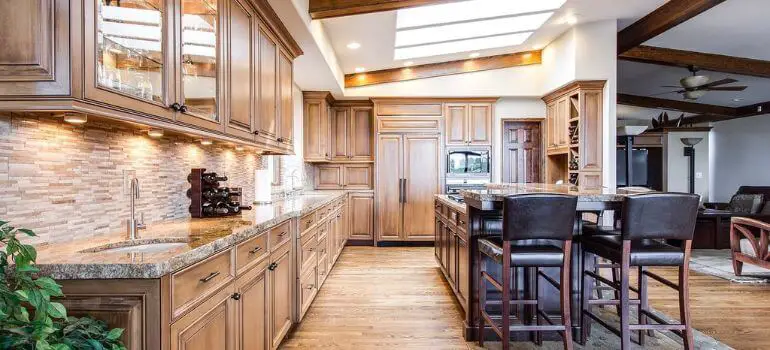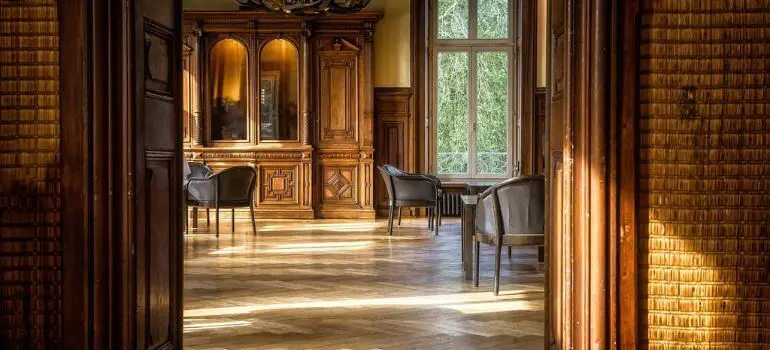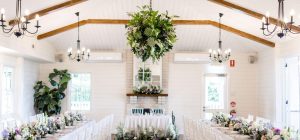Wooden floors add a touch of warmth and elegance to any space, but to keep them looking their best, sealing is essential. Among the myriad of sealing options available, Bona Natural Seal and Bona Classic Seal stand out. In this article, we’ll delve into the characteristics of each product, providing you with insights to make an informed decision for your wood sealing needs.
Introduction
Wood sealing is not just about protection; it’s about preserving and enhancing the natural beauty of your wooden surfaces. Bona, a trusted name in floor care, offers two prominent sealing options – Bona Natural Seal and Bona Classic Seal.
Understanding Wood Sealing
Wood, being a natural material, is susceptible to wear, moisture, and UV damage. Sealing acts as a shield, preventing these elements from compromising the integrity of the wood. Moreover, it enhances the color and grain, making your floors a visual delight.
Bona Natural Seal: Unveiling the Natural Beauty
Bona Natural Seal is designed for those who want to retain the authentic, raw appearance of their wood. It brings out the natural tones and characteristics of the wood without adding a layer of shine. Composed of sustainable, plant-based ingredients, it’s an eco-friendly choice for those who prioritize environmental impact.
Bona Classic Seal: Time-Tested Elegance
On the other hand, Bona Classic Seal is for those who appreciate a classic, timeless finish. It adds a subtle sheen to the wood, enriching its color and providing an elegant, traditional look. Crafted with durability in mind, it ensures your floors maintain their grace for years to come.
Application Process: Step-by-Step Guide
1. Preparation is Key
- Begin by ensuring your wood surface is clean and free from dust, debris, and any previous finishes.
- Sand the surface if needed to create a smooth and even base.
2. Ventilation Matters
- Adequate ventilation is crucial during the application process. Open windows and doors to ensure proper airflow, reducing the impact of fumes.
3. Choose the Right Tools
- Select a high-quality brush, roller, or applicator pad suitable for the size and type of the wood surface.
- Bona recommends using their applicators for optimal results.
4. Shake Well
- Before opening the seal container, give it a thorough shake to ensure an even distribution of the product.
5. Apply the First Coat
- Use long, even strokes to apply the first coat of Bona Natural Seal or Bona Classic Seal.
- Work in the direction of the wood grain for a more natural appearance.
- Ensure consistent coverage without pooling.
6. Allow Drying Time
- Let the first coat dry completely. Drying times may vary, so refer to the product instructions for specific guidance.
- Avoid foot traffic on the freshly applied seal.
7. Lightly Sand (Optional)
- For an ultra-smooth finish, you may choose to lightly sand the surface between coats.
- Use fine-grit sandpaper and remove any sanding dust before applying the next coat.
8. Apply Additional Coats
- Depending on the desired level of protection and sheen, apply additional coats.
- Follow the recommended drying times between coats.
9. Final Inspection
- Once the final coat is applied and dried, inspect the surface for any irregularities.
- Touch up any areas that may need additional attention.
10. Cure Time
- Allow the sealed wood to cure completely before placing furniture or rugs on the surface.
- The curing time may vary, so refer to the product guidelines.
11. Regular Maintenance
- Keep your newly sealed floors looking their best by regularly sweeping and damp mopping.
- Avoid harsh chemicals that may compromise the seal.
12. Enjoy Your Beautifully Sealed Wood
- Once the entire process is complete, take a moment to admire and enjoy the enhanced beauty and protection of your wood floors.
Remember, always follow the specific instructions provided by Bona for the product you choose. Each seal may have slightly different application requirements, and adherence to these guidelines ensures optimal results and longevity for your wood floors.
Durability and Longevity
1. Bona Natural Seal: Preserving Beauty with Durability

- Natural Aesthetics: Bona Natural Seal is designed to maintain the natural appearance of wood. Despite its emphasis on aesthetics, it doesn’t compromise on durability.
- Protective Shield: This seal forms a protective barrier against daily wear and tear, including foot traffic, furniture movement, and other common sources of abrasion.
- Longevity: With proper application and regular maintenance, Bona Natural Seal provides lasting protection, ensuring the wood’s beauty endures over time.
2. Bona Classic Seal: Timeless Elegance Built to Last
- Classic Finish with Strength: Bona Classic Seal combines its timeless finish with robust durability. It adds an elegant sheen to the wood while providing a resilient shield against potential damage.
- Durable Formulation: Crafted with durability in mind, this seal is well-suited for high-traffic areas, making it an excellent choice for spaces where longevity is a top priority.
- Enduring Charm: The classic finish not only enhances the wood’s visual appeal but also ensures that charm persists, making Bona Classic Seal a lasting solution.
3. Comparison of Durability
- Both Bona Natural Seal and Bona Classic Seal offer impressive durability. The choice between the two depends on whether you prioritize a completely natural look or a classic finish with added resilience.
- Assessing the level of foot traffic in the area where the wood will be sealed can also guide your decision. For high-traffic zones, the added strength of Bona Classic Seal may be particularly beneficial.
4. Maintenance for Longevity
- Proper maintenance is crucial for extending the longevity of the seals. Regular sweeping to remove dirt and debris, along with periodic damp mopping using Bona-approved cleaning solutions, helps preserve the integrity of the seals.
- Avoid using harsh chemicals or excessive water, as these can impact the longevity of the seal.
5. Real User Experiences
- User reviews often highlight the enduring qualities of both Bona Natural Seal and Bona Classic Seal. Many users appreciate the long-lasting protection these seals provide, contributing to the overall satisfaction of their investment.
Maintenance Considerations
1. Regular Cleaning Routine
- Sweeping: Regularly sweep your sealed wood floors to remove dust, dirt, and debris. This simple practice prevents scratches and maintains the overall cleanliness of the surface.
- Damp Mopping: Periodically damp mop the floors using a Bona-approved cleaning solution. This helps remove stains and keeps the seal in optimal condition.
2. Avoid Harsh Chemicals
- Cleaning Products: Refrain from using harsh chemicals or abrasive cleaners on your sealed wood floors. These substances can erode the seal and compromise its protective properties.
- Water Control: Avoid excessive water during cleaning, as prolonged exposure may affect the integrity of the seal. Use a damp, not soaking wet, mop.
3. Furniture Protectors
- Place felt or soft pads under furniture legs to prevent scratches and scuffs when moving or rearranging items. This small precaution helps maintain the pristine appearance of your sealed wood floors.
4. Entrance Mats
- Position entrance mats at doorways to capture dirt and grit before it reaches your sealed floors. This minimizes the potential for abrasions caused by particles brought in from outside.
5. Pet Care
- Trim your pets’ nails regularly to prevent scratches on the sealed wood surface. Wipe up any pet accidents promptly to avoid potential damage to the seal.
6. Periodic Inspection
- Conduct periodic inspections of your sealed wood floors to identify any areas that may need attention. Promptly address issues such as scratches or wear patterns to prevent them from worsening.
7. Reapplication as Needed
- Depending on foot traffic and wear, consider reapplying Bona Natural Seal or Bona Classic Seal every 2-3 years or as recommended by the product guidelines. This ensures continued protection and longevity.
8. Humidity Control
- Maintain a stable indoor humidity level. Fluctuations in humidity can affect wood, leading to expansion or contraction. Using a humidifier or dehumidifier as needed helps preserve the integrity of the wood and the seal.
9. Professional Inspection
- Consider periodic professional inspections of your sealed wood floors, especially in high-traffic areas. Professionals can provide insights into the condition of the seal and recommend any necessary maintenance or reapplication.
10. Stain Removal
- Promptly address any spills or stains on the sealed wood surface. Use a Bona-approved cleaning solution and a soft cloth for gentle stain removal. Avoid aggressive scrubbing, which can damage the seal.
Customer Reviews: Real Experiences
User reviews of Bona Natural Seal often praise its ability to enhance the wood’s natural beauty without compromising on durability. On the other hand, Bona Classic Seal users appreciate its classic finish and long-lasting protection. Both products have garnered positive feedback for their quality.
Cost Comparison
1. Initial Cost Consideration
- Bona Natural Seal: Typically, Bona Natural Seal may be slightly more affordable than its counterpart. This initial cost advantage can be attractive for those looking to achieve a natural finish without exceeding their budget.
- Bona Classic Seal: While it may have a slightly higher initial cost, Bona Classic Seal often appeals to those seeking a timeless, elegant finish that adds a subtle sheen to the wood.
2. Coverage Area
- Both Bona Natural Seal and Bona Classic Seal offer excellent coverage. Understanding the square footage of the area you intend to seal is crucial for estimating the quantity of product needed and, consequently, the overall cost.
3. Long-Term Value
- Consider the long-term value provided by each seal. Both Bona Natural Seal and Bona Classic Seal are formulated for durability, meaning they offer lasting protection. While the initial cost may differ, the extended life of the seal contributes to long-term value.
4. Maintenance Costs
- Factor in maintenance costs over time. Both seals have straightforward maintenance requirements, typically involving regular sweeping and damp mopping with Bona-approved cleaning solutions. These maintenance practices are cost-effective and contribute to the longevity of the seals.
5. Professional Application vs. DIY
- Consider whether you’ll be applying the seal yourself or hiring a professional. DIY application can save on labor costs but requires careful attention to detail for optimal results. Professional application ensures expertise but may incur additional service fees.
6. Wood Type and Seal Compatibility
- The type of wood you have can influence the cost. Ensure that the chosen seal is compatible with your specific wood type for the best results. Some exotic woods may require special considerations, potentially affecting the overall cost.
7. Budget-Friendly Tips
- Take advantage of promotions, discounts, or bulk purchase options that may be available. Some retailers offer package deals or seasonal sales, providing opportunities to acquire Bona Natural Seal or Bona Classic Seal at a more budget-friendly price.
8. Environmental Considerations
- Both seals adhere to high environmental standards, contributing to sustainable floor care. If environmental impact is a priority, the eco-friendly nature of these products can be considered valuable despite any potential differences in initial cost.
9. User Reviews and Recommendations
- Explore user reviews and recommendations regarding the cost-effectiveness of each seal. Real experiences from other users can provide valuable insights into the overall satisfaction and perceived value of the product.
10. Decision Based on Overall Value
- Ultimately, the decision between Bona Natural Seal and Bona Classic Seal should consider the overall value they bring to your wood floors. Balancing initial cost, long-term durability, and aesthetic preferences ensures a well-informed and cost-effective choice.
Environmental Impact
1. Bona Natural Seal: A Green Choice
- Plant-Based Composition: One of the key environmental advantages of Bona Natural Seal is its plant-based composition. Derived from sustainable and renewable plant sources, this seal aligns with eco-friendly practices.
- Low VOC Content: Volatile Organic Compounds (VOCs) can contribute to indoor air pollution. Bona Natural Seal is designed with low VOC content, minimizing its environmental impact and promoting healthier indoor air quality.
2. Bona Classic Seal: Committed to Sustainability
- Responsible Formulation: While Bona Classic Seal may not have a plant-based composition like its counterpart, it is crafted with a commitment to sustainability. The formulation aims to balance environmental responsibility with the need for durability and performance.
- Low VOCs: Similar to Bona Natural Seal, Bona Classic Seal maintains low VOC levels, supporting a healthier indoor environment.
3. Certifications and Eco-Friendly Practices
- Both Bona Natural Seal and Bona Classic Seal are known for adhering to industry environmental standards. Look for certifications or eco-friendly practices promoted by Bona, as these further validate their commitment to sustainable floor care.
4. Durability and Longevity: Key Eco-Friendly Factors
- The durability and longevity of both seals contribute to their environmental friendliness. By extending the life of the sealed wood floors, Bona Natural Seal and Bona Classic Seal reduce the need for frequent replacements, minimizing waste and resource consumption.
5. End-of-Life Considerations
- When evaluating the environmental impact, consider the end-of-life considerations of the seals. Both Bona Natural Seal and Bona Classic Seal are designed to wear evenly over time, simplifying potential resealing without the need for extensive sanding or removal.
6. User Responsibility in Application
- The eco-friendliness of these seals is also influenced by user responsibility during application. Following recommended application guidelines, avoiding excessive product use, and minimizing waste contribute to a more sustainable use of these flooring products.
7. Recyclable Packaging
- Check for information on the packaging of Bona Natural Seal and Bona Classic Seal. Many eco-conscious companies prioritize recyclable packaging, reducing the environmental footprint associated with product distribution.
8. Consulting with Professionals
- Seeking advice from flooring professionals can provide additional insights into the environmental impact of the seals. Professionals may offer recommendations based on your specific needs and environmental preferences.
9. Decision Aligned with Values
- Making an environmentally conscious decision involves aligning your values with the eco-friendly features of Bona Natural Seal and Bona Classic Seal. Consider factors such as raw material sourcing, manufacturing processes, and the overall sustainability approach of the products.
Versatility in Application
Whether you have hardwood, engineered wood, or bamboo floors, both Bona seals are versatile. They adapt well to different wood types, providing consistent results across various settings.
Common Misconceptions: Debunking Myths
Some misconceptions surround wood sealing, including the belief that it alters the wood’s natural appearance. Both Bona Natural Seal and Bona Classic Seal are designed to enhance, not disguise, the beauty of your wood.
Professional Recommendations
Experts recommend considering factors such as the wood type, level of foot traffic, and desired finish when choosing between Bona Natural Seal and Bona Classic Seal. Consulting with a flooring professional can provide personalized advice.
User-Friendly Features
DIY enthusiasts appreciate the user-friendly nature of both Bona seals. With clear instructions and easy application, achieving professional-looking results is attainable for anyone willing to put in a bit of effort.
Conclusion
In the eternal debate of Bona Natural Seal vs. Bona Classic Seal, there’s no one-size-fits-all answer. Your choice depends on personal preferences, the type of wood, and the desired aesthetic. Both seals offer quality protection and enhancement, ensuring your wood floors stand the test of time.
Now, armed with the knowledge of their differences, you can confidently make a decision that aligns with your vision for your living space.
FAQs
Bona Natural Seal is versatile and suitable for most wood types, but consulting with a professional is recommended for exotic woods.
Yes, Bona Classic Seal adds a subtle sheen to the wood, while Bona Natural Seal maintains a more natural, matte finish.
The frequency of reapplication depends on factors like foot traffic. Generally, every 2-3 years is recommended.
While both seals are durable, it’s advisable to avoid excessive moisture. Consider Bona Mega for high-moisture areas.
They have a mild odor that dissipates as they dry, making the application process relatively odor-free.



